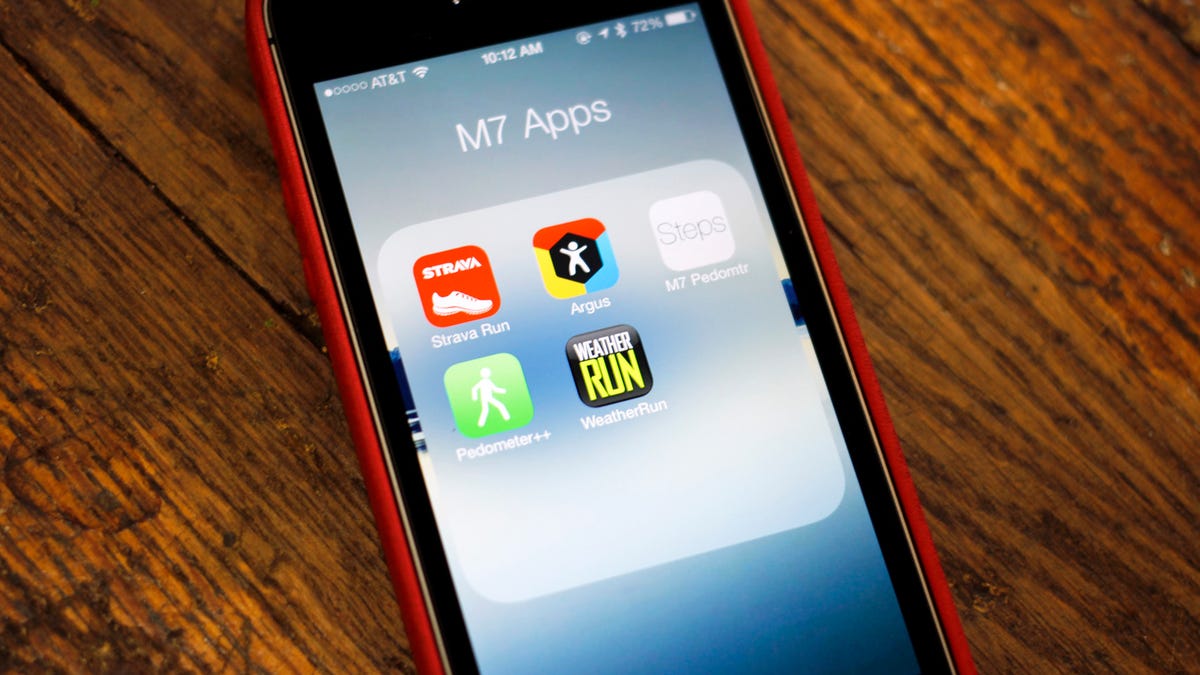Five apps to help you track your steps on the iPhone 5S
The iPhone 5S tracks your daily step count, but doesn't have the option to display totals built into it. You'll need to use an app for that.

The M7 coprocessor in the iPhone 5S is a fancy name for a chip that counts your steps and motion all day, every day. In order to see how many steps you've been taking, you'll need to use an app specifically built for the iPhone 5S and the M7 chip.
While we wait for more developers to integrate the M7 and the stats it keeps into apps, there are currently five apps available that have already integrated with the motion tracker. Here they are in no particular order.
Strava Run
This free app has been around for a while giving runners stats and GPS-created maps of running routes. With the M7 having the capability to discern if someone is walking or running (among other things), it only makes sense for the app to integrate with the new technology.
You won't find your daily step counts in Strava Run; instead you will find that it uses the M7 chip to automatically pause your current activity when you stop running, and provide better accuracy about your run.
Download Strava Run from the App Store.
Argus
Argus is more than a simple step counter app in that it also wants you to enter your daily weight, and track meals, water intake, and more. Basically, it's a health app that also happens to use the M7 chip to more accurately count your steps.
The first time you launch Argus, you may be surprised to find that it automatically populate your last week's worth of steps. This is because of the M7 recording and storing this data, regardless of what apps are installed, for the last seven days.
As you'll find with most of the pedometer-type apps that use the M7, there's also the option built into Argus to have your current step count displayed as a notification on the app icon.
Download Argus from the App Store for free
M7 Pedometer - Steps
This free app is built with one purpose: to show you how many steps you take on a daily basis.
It will provide you with your current step count for the day, along with your step count for the last week, and a total for the current year.
You can also view a graph charting your step counts over the last month. If you want to go back to a previous month, just swipe to the right.
With the iPhone 5S and the M7 having only been out for a few weeks now, there isn't a lot of historical information available, but I can see these graphs increasing in value in the future.
Download M7 Pedometer - Steps from the App Store.
Pedometer++
Pedometer++ is a bare-bones pedometer app. It displays your current step count for the day, along with the step count for the last seven days, and that's it. You can't share via Twitter or Facebook, and you can't view a graph or even go back in time.
Actually I lied, there is one additional feature built into the app: the ability to display your current step count as a notification on the app icon.
The step count should automatically refresh when you first launch the app, but if for some reason you don't think it has, the developer built in the capability to pull to refresh.
Download Pedometer++ from the App Store.
WeatherRun
WeatherRun is the only app that's not free. It'll set you back $1.99, but it provides more than just a step count.
The app was originally designed to help runners better track their runs by providing weather and altitude stats.
With a recent update adding M7 support, WeatherRun will now also show users their daily and monthly step counts, just as the apps above will do.
Download WeatherRun from the App Store.
As someone who wears a Fitbit Flex on a daily basis, I have some questions about the accuracy of the iPhone 5S and the M7 chip.
I've found the step count on my iPhone to be roughly half (if not less) than that tracked by the Fitbit. Granted there are times when I walk around for a few minutes with my iPhone sitting on the desk, but when I have Fitbit telling me I took 5,000 steps yesterday and the iPhone 5S telling me I only took 1,700 steps, something's not right.
Even if you already wear an activity monitor and have an iPhone 5S, download one of the free apps mentioned above and compare the results with the ones from your monitor. What's your experience like?

